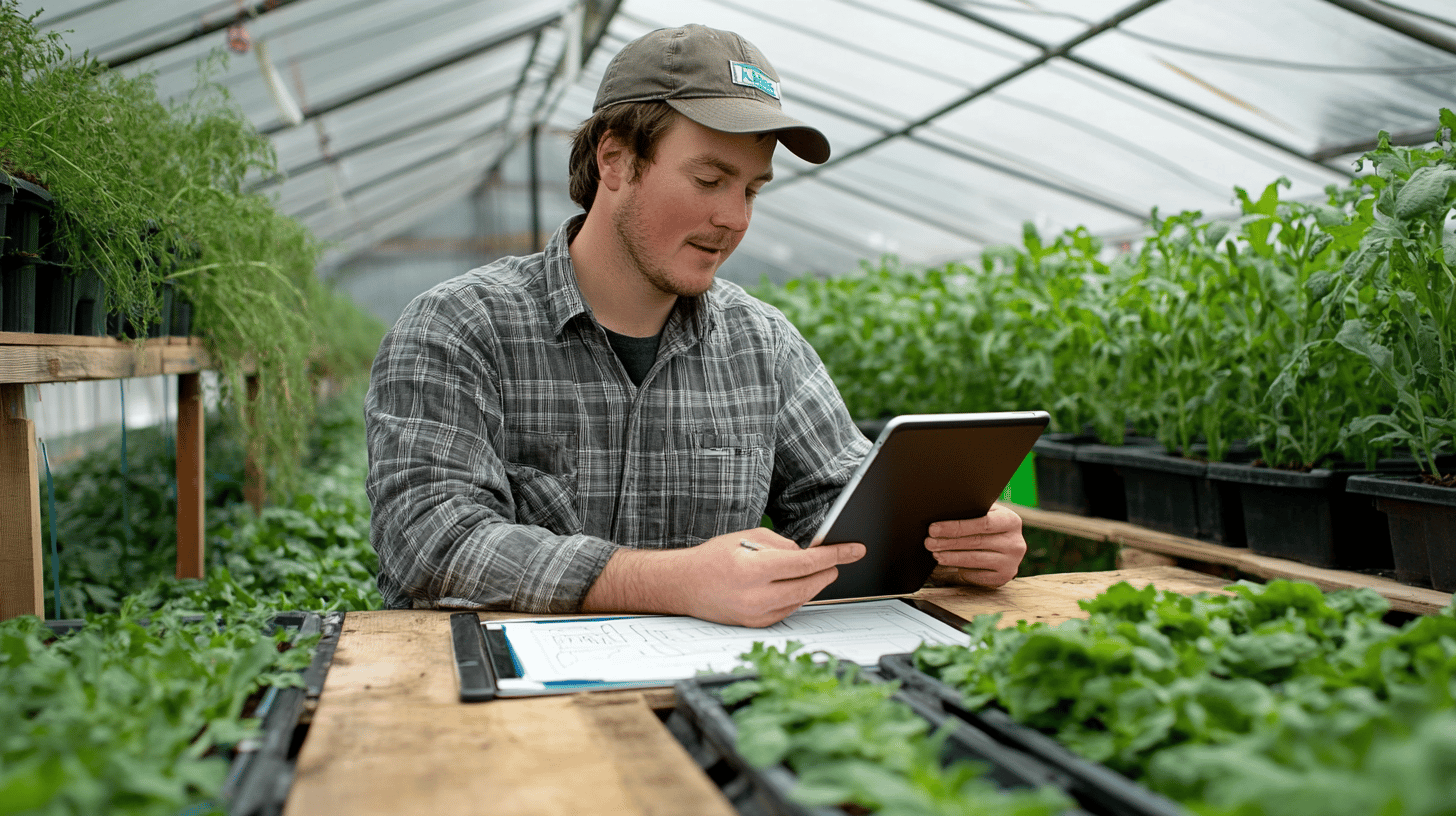
Digital Transformation
QHSE Software Strategic Planning & Training: Agriculture Guide
Unlock the potential of your agricultural operations with Q-Hub's QHSE software, designed to enhance quality management and safety standards. Discover how strategic planning and effective training can drive efficiency and compliance, setting your farm on a path to success.

Ethan Brice
12
mins
QHSE Software Strategic Planning & Training: Agriculture Guide
Revolutionising Agricultural Operations with QHSE Software
In today's fast-paced agricultural landscape, enterprise resource planning instruction and customer service training courses are becoming increasingly vital. These educational programmes, also known as staff development workshops or employee skill enhancement seminars (antonyms: inexperience sessions or incompetence classes), are essential for maximising efficiency and compliance in farming practices. By integrating advanced software solutions, farmers can enhance quality management and safety standards, ultimately taking their agricultural businesses to new heights. Let's dive into how strategic planning with QHSE software can transform your operations and explore the importance of user training in this ultimate guide for farmers.Understanding QHSE in Agriculture
QHSE, which stands for Quality, Health, Safety, and Environment, is a crucial framework for modern agricultural operations. It's not just a fancy acronym, mind you. It's the backbone of sustainable and efficient farming practices. Let's break it down, shall we? Quality management in agriculture is all about ensuring your produce meets the highest standards. Think ISO 9001 certification - it's like a gold star for your farm's processes. And don't forget HACCP plans! They're essential for food safety, helping you identify and control hazards in your production process. Now, health and safety management - that's where ISO 45001 comes in. It's all about creating a safe working environment. You know, identifying risks, mitigating them, and making sure your workers are properly trained. Speaking of which, have you got a training and competency programme in place? It's crucial for tracking worker skills and identifying training needs. Lastly, there's environmental management. ISO 14001 is your go-to standard here. It helps you manage your farm's environmental impact - reducing waste, using resources efficiently, and tackling issues like climate change and pollution.Strategic Planning for QHSE Implementation
Implementing a QHSE management system isn't something you do on a whim. It requires careful planning and execution. Here's a step-by-step guide to get you started: 1. Gap Analysis: First things first, you need to identify areas that need improvement in your quality, health, safety, and environmental management. 1. Strategy Formulation: Once you know where the gaps are, it's time to develop a strategy. This should align with your farm's goals and objectives. Don't forget to engage stakeholders and assess risks! 1. Implementation: Now comes the fun part - rolling out your QHSE management system. Make sure all your employees and contractors are on board and understand the new policies and procedures. 1. Monitoring and Evaluation: Your job's not done once the system is in place. You need to regularly monitor and evaluate its effectiveness. Keep an eye out for areas that need improvement. 1. Continuous Improvement: Ever heard of the PDCA cycle? That's Plan-Do-Check-Act. Use it to continuously improve your processes and address new risks and opportunities as they arise.Essential Tools for QHSE Management
Now, let's talk about some practical tools that can help you manage your QHSE system effectively. These aren't just fancy extras - they're essential for keeping your farm running smoothly and safely. First up, we've got the training matrix. It's a nifty tool for visualising the training needs and competencies of your farm workers. Here's an example:| Employee | Job Role | Required Training | Completed Training |
|---|---|---|---|
| John Doe | Farmhand | Health and Safety, Equipment Operation | Health and Safety |
| Jane Smith | Farm Manager | Quality Management, Environmental Impact | Quality Management |
| Risk | Likelihood | Impact | Priority |
|---|---|---|---|
| Chemical Exposure | High | High | High |
| Equipment Failure | Medium | Medium | Medium |
| Weather Conditions | Low | High | Medium |
| Month | Compliance Requirement | Status |
|---|---|---|
| January | ISO 14001 Audit | Scheduled |
| March | Health and Safety Training | Completed |
| June | HACCP Plan Review | Pending |
QHSE Software Solutions for Agriculture
Now, let's talk about the star of the show - QHSE software solutions. These aren't just fancy gadgets, they're powerful tools that can transform your agricultural operations. First off, you've got training and competency management features. These are crucial for keeping track of your workers' skills and identifying areas where they might need a bit of brushing up. It's like having a personal tutor for your entire workforce! Then there's contractor safety management. This helps you manage the safety of your contractors from start to finish - from pre-qualification right through to ongoing monitoring. It's like having an extra pair of eyes on your farm. Emissions management is another key feature. It automates data collection and reporting for environmental compliance. No more scratching your head over complex environmental regulations! Audits and compliance features support the Plan-Do-Check-Act methodology we talked about earlier. They help you manage compliance with regulations, making sure you're always on the right side of the law. Finally, there's process hazard analysis. This helps you conduct and manage process hazard analyses efficiently. It's like having a safety expert on call 24/7.Integrated Management Systems (IMS) in Agriculture
Now, here's where things get really exciting. Imagine having all these QHSE components integrated into a single, cohesive system. That's what an Integrated Management System (IMS) does. An IMS allows for centralised management of all your QHSE processes, documents, risks, and compliance. It's like having a control centre for your entire farm operation. Software solutions like Agility System or SAI360 can help you achieve this level of integration. But why bother with an IMS, you might ask? Well, it's all about efficiency and effectiveness. By integrating all your QHSE processes, you can: 1. Reduce duplication of effort 2. Improve communication across different areas of your farm 3. Ensure consistency in your approach to quality, safety, and environmental management 4. Make better-informed decisions based on a holistic view of your operations It's not just about ticking boxes or meeting regulatory requirements. An IMS can help you create a culture of continuous improvement on your farm. It's about always striving to do better, to be safer, to be more efficient.Training and Implementation Strategies
Now, having all this fancy software is well and good, but it's not worth a hill of beans if your team doesn't know how to use it. That's where training comes in. First off, you need to identify who needs training and what kind of training they need. Your farm manager might need in-depth training on all aspects of the QHSE software, while your farmhands might only need to know how to use specific features. Next, consider the different types of training you can offer. There's classroom-style training, which is great for covering the basics and allowing for immediate questions and answers. Then there's hands-on training, where your team can get to grips with the software in a practical setting. Don't forget about ongoing training and support. QHSE software often gets updates and new features, so make sure your team is always up to speed. And here's a pro tip: consider a 'train the trainer' approach. Train a few key members of your team thoroughly, and they can then help train others. It's a great way to build expertise within your farm and reduce reliance on external trainers.Measuring Success and Continuous Improvement
So, you've implemented your QHSE software and trained your team. Job done, right? Not quite. The real work is in measuring your success and continuously improving. First, you need to define what success looks like for your farm. This might include metrics like: - Reduction in workplace accidents - Improvement in product quality - Decrease in environmental incidents - Increase in efficiency (e.g., reduced waste, improved yield) Once you've defined your success metrics, you need to track them regularly. This is where your QHSE software's reporting features come in handy. Use them to generate regular reports and track your progress over time. But don't just collect data for the sake of it. Use it to drive continuous improvement. If you notice a trend in workplace accidents, for example, dig deeper to understand why and take action to address it. Remember, QHSE management is not a one-time project - it's an ongoing process of improvement. Use the Plan-Do-Check-Act cycle we mentioned earlier to continuously refine and improve your processes. And don't be afraid to ask for feedback from your team. They're the ones using the software day in, day out. Their insights can be invaluable in identifying areas for improvement and making your QHSE management more effective.Overcoming Common Challenges
Now, let's be honest. Implementing QHSE software and changing your farm's processes isn't always going to be smooth sailing. There are bound to be challenges along the way. But don't worry, we've got you covered. One common challenge is resistance to change. Some of your team members might be set in their ways and reluctant to adopt new technology. The key here is communication. Explain the benefits of the new system, not just for the farm as a whole, but for their day-to-day work. Show them how it can make their jobs easier and safer. Another challenge might be the initial time investment. Implementing a new system takes time, and you might worry about it affecting your farm's productivity. Remember, though, that this is an investment in your farm's future. The time you spend now will pay off in increased efficiency and reduced risks down the line. Data accuracy can also be a challenge, especially if you're moving from paper-based systems to digital ones. Make sure you have a plan for data migration and validation. It might be worth considering a phased approach, where you gradually move different aspects of your QHSE management to the new system. Finally, there's the challenge of keeping up with regulatory changes. Agricultural regulations can change frequently, and it can be hard to keep up. This is where the right QHSE software can really shine, with features that help you stay on top of regulatory changes and ensure compliance. Remember, every farm is unique, and you might face challenges specific to your operation. The key is to approach them with a problem-solving mindset and to leverage the support offered by your QHSE software provider.
A supported 30 day trial

Bespoke onboaring support

30 day money back guarantee







